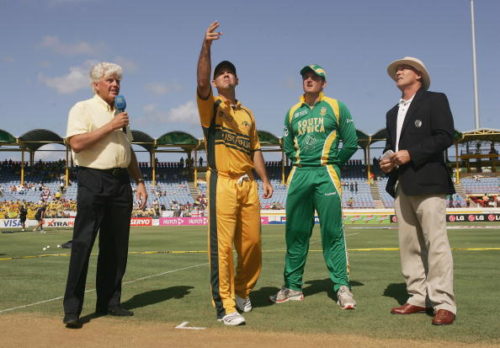
T20s were invented to fill a specific niche in the cricket market. It was believed by some great, visionary minds that cricket fans were turning away from ODIs because of the “boring” middle overs between ten and 40. Apparently these 30 overs had too many balls that resulted in neither a wicket nor a boundary, causing viewers to switch off from a lack of action. This essay proposes that we reduce limited overs cricket by a further 20 overs.
There have been experiments with reducing cricket matches to less than 20 overs, such as the recent T10 tournament in Sharjah. Some brave souls have talked about T5 cricket, but what is being proposed here is the advent of zero-over cricket, hereby dubbed the T0 (pronounced “tee-zero”) format. It’s technically a form of limited-overs cricket in the sense that overs are, indeed, acutely limited.
Many people say that Tests are boring because the result is often a foregone conclusion. Over five days, it’s as likely as anything ever is in sport that the most skilled side wins. This contrasts sharply with soccer, and with T20 cricket, because these sports have a much greater luck component. This luck component means that weaker teams can upset stronger ones more often, making for a much more engaging spectacle.
Why not maximise the thrill of potential upsets by deciding the match at the coin toss?
Purists will likely dismiss the idea at this stage, pointing out that reducing the contest to zero overs also reduces the batting, bowling and fielding components of the game. While this is a fair criticism, it needs to be balanced against the fact that the boring aspects of the game would also be reduced. T0 cricket completely does away with the notion that the players are just going through the motions; every moment of every game would be crucial to the outcome.
In all, there are at least three major reasons to support the expansion of T0 cricket. Each of these reasons solves a major problem with the current state of the longer formats of world cricket.
One of the foremost is that it would enable cricket to be expanded into markets where people have not been able to play because of the expense. Cricket is a fairly expensive sport to play, especially when compared to rugby or soccer, and this puts an upper limit on its market appeal to the poorer demographics of the world. Many interested people just don’t have the spare cash for several bats, balls, a set of pads, box, helmet, thighguard etc.
In T0 cricket teams don’t need anywhere near as much equipment as they need in the longer formats – for some players a uniform would suffice. Moreover, maintenance of that equipment is also reduced to a minimum on account of being used less often than in the longer formats of the game. Limiting the equipment factor will also have the effect of reducing gear envy among teammates.
The effect on wear and tear on the players’ bodies is another problem solved by T0 cricket. England head coach Trevor Bayliss was in the news recently for saying that T20 internationals should be dropped from the schedule to help with player burnout. Bayliss contends that the cricket schedule is so jam-packed nowadays there is no time for players to rest.
T0 cricket takes away the physical exhaustion factor. By minimising the incidence rate of high-risk physical exertions, T0 cricket also minimises the chances of injury or burnout. Also, with awareness growing about the long-term dangers of concussions, mothers of young keen-on-cricket children will be relieved to hear that T0 cricket offers very little risk of players getting hit in the head by a hard, rapidly moving ball. The biggest risk is getting a coin in the eye.
Modern life has a peculiar obsession with equalising conduct between the sexes, and T0 cricket can proudly claim to have solved the gender problem. At the moment, men and women can’t really play cricket together because of the fact that men are much taller and stronger, which provides immense advantages when it comes to bowling a ball fast or swinging a bat hard. The differences are so vast that leagues currently have to be separated by gender.
Many would argue that these gender differences, like the personal differences in height and muscle mass, make the game of cricket inherently unfair. Instead of everyone having a reasonable expectation of being able to pull off a win, the longer forms of cricket reduce batting to a mere contest of strength, timing and hand-eye co-ordination, and bowling to a simple process of repeating a single action with maximum shoulder leverage.
T0 cricket would provide a truly level playing field, as all players would be limited to their own ability to pick which side the coin was going to land on – a tricky skill to master even for the most dedicated or gifted athlete.
In summary, there are a number of reasons to think that this revolutionary proposal could rejuvenate the public’s appreciation for the sport. T0 cricket offers the perfect solution for busy people in our modern world who don’t have copious amounts of time to set aside to watch a match, and is surely the future of our beloved game.
*
If you enjoyed reading this essay, you can get a compilation of the Best VJMP Essays and Articles of 2017 from Amazon for Kindle or Amazon for CreateSpace (for international readers), or TradeMe (for Kiwis).
